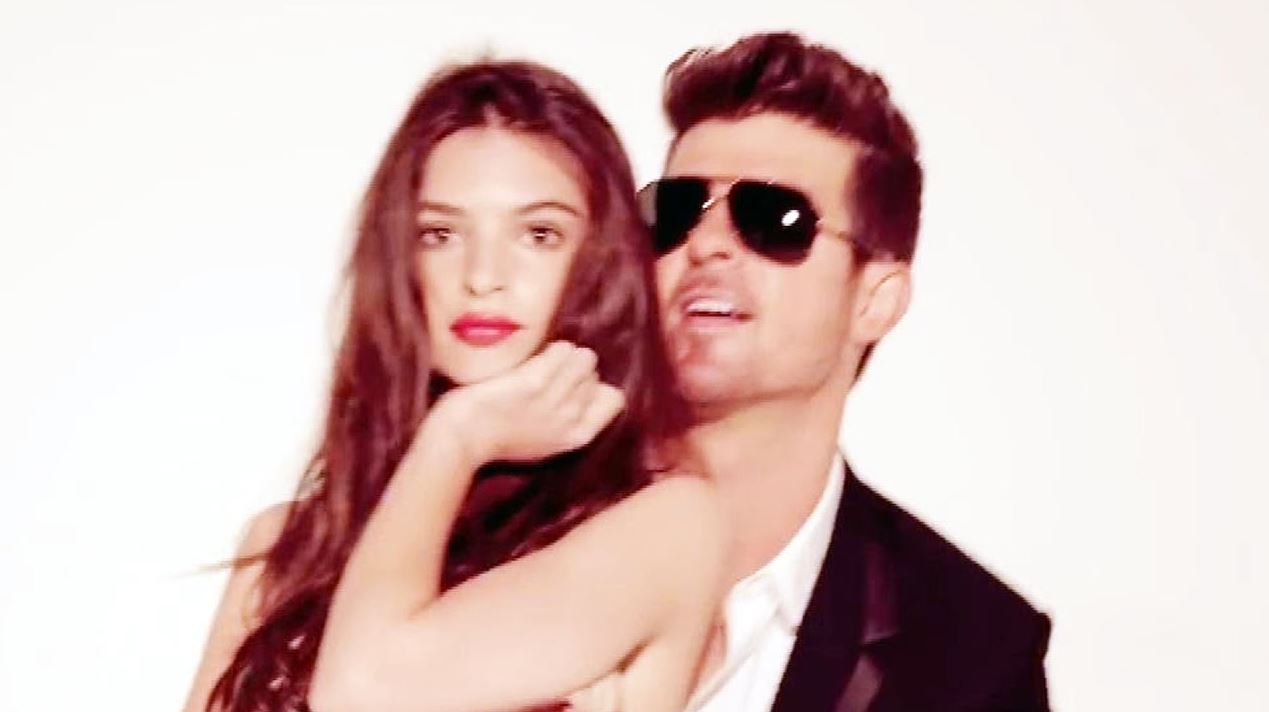Emily Ratajkowski Video Incident Examining the Broader Implications for Celebrity Privacy and Media Ethics
Emily Ratajkowski is a prominent figure in the contemporary cultural landscape, known primarily for her work as a model and actress. She gained widespread attention in 2013 after appearing in the music video for Robin Thicke’s “Blurred Lines,” which catapulted her into the spotlight. Since then, Ratajkowski has built a significant career in both the fashion industry and in film, becoming known for her bold, confident persona and her advocacy for women’s rights, particularly around issues of body positivity and sexual expression.
Recently, Emily Ratajkowski found herself at the center of a media storm due to the release of a video that contained sensitive personal content. The video’s emergence sparked a significant public reaction, highlighting the ongoing issues of privacy breaches affecting public figures. The incident not only raises questions about the legality of disseminating such material without consent but also underscores the ethical considerations that the media and public must navigate when such content becomes available. This case presents an opportunity to discuss the implications of celebrity culture on privacy rights and the responsibilities of those who control and consume media.
The impact of the video on public perception and Emily’s personal life is profound, stirring debates about the boundaries of celebrity privacy and the ethical dimensions of internet culture. In this context, it becomes crucial to consider the principles of respect and dignity that should guide media coverage. This introduction aims to explore these themes, setting the stage for a deeper understanding of the delicate balance between public interest and personal privacy in the digital age.
Content
Background Information
Emily Ratajkowski’s career has been marked by her advocacy for feminist issues and her willingness to speak openly about sexuality and body image, which has resonated with many people, particularly young women. Her work extends beyond modeling and acting; she is also a writer and entrepreneur, having launched her own swimwear line. Emily’s public persona is that of a modern feminist who uses her platform to challenge societal norms and advocate for a more inclusive and respectful world.
However, Emily’s experience is not unique in the realm of celebrity culture. Many public figures have faced similar invasions of privacy, where personal and often intimate materials are leaked to the public without consent. The historical context of these violations goes back as far as the advent of popular media itself but has become more acute with the rise of digital technology and social media. Celebrities like Jennifer Lawrence and Scarlett Johansson have also endured privacy breaches, leading to public and legal battles that have helped to shape the discourse around celebrity and privacy.

These incidents serve as stark reminders of the vulnerabilities associated with being in the public eye and challenge the notion that public figures must endure such violations as part of their chosen career paths. The discussion around these issues is crucial as it influences public attitudes and legal standards regarding privacy and personal agency, setting precedents for how such cases are handled in the future.
In the following sections, we will explore the specific details of the incident involving Emily Ratajkowski, the reaction from the media and the public, and the broader implications of such privacy breaches for celebrities and ordinary individuals alike.
The Video Controversy Video
The incident involving Emily Ratajkowski centers on a video that surfaced without her consent, containing personal content intended to remain private. While specific details of the video are not appropriate to disclose, it is crucial to understand the context in which it became public and the immediate repercussions it had on all parties involved. The video’s release sparked a considerable outcry regarding the ongoing issue of privacy violations targeting public figures.
Emily Ratajkowski Video Watch Hot and in Full 1080p HD
Emily Ratajkowski Video Watch Complete HD 1080p with Sensual Touch
The timeline of the incident began when the video first appeared online and quickly spread across various social media platforms and websites. It is unclear who initially leaked the video or their motivations, but its spread highlights significant vulnerabilities in digital security and personal privacy. Upon becoming aware of the video, Ratajkowski and her team promptly responded with efforts to remove the content from the internet and seek legal recourse against those responsible for its distribution.
Emily Ratajkowski’s response to the breach was one of defiance and indignation. She publicly addressed the violation on her social media platforms, condemning the invasion of her privacy and highlighting the broader issues of consent, respect, and legal rights. Emily’s stance resonated with many, as she called for greater accountability and enhanced protections for individuals’ private lives, stressing that public figures are not exempt from being treated with dignity and respect.
Public and Media Reaction
The media coverage of the video and its implications varied widely. Some outlets reported on the incident with sensitivity towards Emily’s privacy, focusing on the broader ethical issues and the legality of sharing such content. Others, however, might have sensationalized the story, contributing to the violation of Emily’s privacy by perpetuating the distribution of the video. This dichotomy in media practice brought to light the ongoing ethical debate regarding journalism and privacy rights: where should the line be drawn in reporting on public figures?
Public reaction on social media was equally mixed. Many fans and supporters rallied around Emily, expressing solidarity and calling for respect for her privacy. Hashtags and online campaigns emerged almost immediately, advocating for her and condemning the breach. On the other hand, there were pockets of the internet where the video was circulated, and discussions veered towards victim-blaming and sensationalism, showcasing a disturbing lack of empathy and respect for personal boundaries.

This incident has served as a case study for the power dynamics at play within celebrity culture and the digital age. The support Emily received highlights a growing public awareness and sensitivity towards issues of consent and privacy. Yet, the backlash and continued circulation of the video underscore a persistent problem in society’s handling of such violations. Analyzing the balance of support and backlash offers insights into cultural attitudes towards privacy, demonstrating that while progress has been made, there is a substantial journey ahead in educating and reforming public and media behavior concerning privacy rights.
Through this exploration of the video controversy and the reactions it spurred, a complex picture emerges of the challenges public figures face in the digital era and the critical role of media and public in shaping the narrative around privacy and respect in the modern world.
Legal and Ethical Considerations
The legality of sharing and distributing sensitive content without consent is a complex issue that spans various legal jurisdictions. In many regions, including the United States, disseminating private images or videos without the consent of the individual can constitute a violation of privacy laws and may be punishable under revenge porn statutes. These laws are designed to protect individuals from having their privacy invaded and dignity assaulted by unauthorized distribution of private content. In the case of Emily Ratajkowski, the legal team could pursue several actions, including seeking damages for invasion of privacy and intentional infliction of emotional distress.
From an ethical standpoint, the responsibilities of media outlets and individuals in handling private content are profound. Ethical journalism demands respect for the privacy and dignity of individuals, emphasizing the importance of consent before publishing sensitive material. Media outlets face a moral obligation to prevent the perpetuation of harm caused by such breaches, which involves making conscientious decisions about what to publish and circulate. The ethical implications extend to individuals on social media, who must question the morality and legality of sharing content that is not theirs to distribute.
Potential legal actions by Emily Ratajkowski or her representatives could include filing lawsuits against those who originally leaked the video, as well as any platforms or individuals who facilitated its spread. These legal measures not only seek to remedy the personal damages incurred but also aim to set a precedent that deters similar violations in the future.
Impact on Emily Ratajkowski
The release of the sensitive video has had significant impacts on Emily Ratajkowski’s personal and professional life, both in the short-term and potentially long-term. Initially, the incident likely caused considerable emotional distress, leading to a need for legal and psychological support. Professionally, while Emily has a resilient public persona and a supportive fan base, the breach could impact her relationships with brands, collaborators, and projects that might be sensitive to public controversies.
In response to the incident, Emily and her team took swift measures to manage the situation and mitigate its impacts. These measures included working with legal counsel to address the legal violations and coordinating with social media platforms and search engines to remove the content swiftly. Publicly, Emily utilized her platform to speak out against the breach of privacy, which not only helped in managing the narrative around the incident but also reinforced her stance as an advocate for personal rights and women’s issues.

Furthermore, Emily may engage in public speaking or write about her experiences to raise awareness about privacy rights and the need for more robust protections for individuals in the digital age. Such actions could help transform a personal violation into a public discussion on necessary changes in legislation and social norms.
The incident underscores the vulnerability of public figures to privacy breaches and highlights the need for ongoing dialogue about the balance between public interest and private rights. As society continues to grapple with these issues, the responses from individuals like Emily Ratajkowski will play a critical role in shaping future legal and ethical standards regarding privacy in the digital world.
Broader Implications for Celebrity Privacy
The incident involving Emily Ratajkowski is not isolated but rather reflective of broader trends in celebrity privacy issues. In the digital age, the privacy of public figures is increasingly precarious, as advances in technology and the ubiquity of social media facilitate the rapid dissemination of personal content. This ease of access to celebrities’ private lives creates a pervasive risk of privacy violations, which can have devastating effects on individuals’ personal and professional lives.
The plight of celebrities like Jennifer Lawrence, Scarlett Johansson, and others who have faced similar invasions of privacy underscores a pattern of breaches that point to a systemic problem within our media-driven society. These incidents often spark public debates about the ethical responsibilities of those who share and consume such content. However, despite public outcry and the affected individuals’ legal actions, repeated privacy breaches indicate that current measures are insufficient.
This ongoing issue highlights the need for stronger privacy protections for individuals in the public eye. Current laws often fail to keep pace with the rapid evolution of technology, resulting in legal grey areas that can be exploited. There is a pressing need for comprehensive legislation that better addresses the nuances of digital privacy, including the non-consensual distribution of images and videos. Moreover, there should be a greater emphasis on international cooperation to tackle these issues, as the internet’s global nature often complicates legal jurisdiction.
This exploration of the sensitive video incident involving Emily Ratajkowski, along with broader trends in celebrity privacy, illuminates the critical issues at the intersection of technology, law, and ethical media consumption. The case not only highlights the legal ramifications of privacy breaches but also raises important ethical questions about the responsibilities of media outlets and the general public in respecting and protecting individual privacy.
Throughout this discussion, we’ve seen how the balance between public interest and individual privacy rights is continually being tested in new and challenging ways. Public figures, while benefiting from certain advantages of their status, should not have to forfeit their right to privacy. Society must recognize that the human dignity of public figures does not diminish with their rise to fame.
In conclusion, as technology continues to evolve, so too must our legal frameworks and societal norms concerning privacy. The protection of personal boundaries for public figures requires not only stronger laws and stricter enforcement but also a cultural shift towards greater empathy and respect for personal privacy. It is only through such comprehensive measures that society can hope to offer genuine protection to its most visible members and, by extension, to all individuals. By learning from incidents like that faced by Emily Ratajkowski, we can strive to create a more respectful and considerate media landscape.
Jenna Ortega Video Controversy Navigating Privacy and Ethics in Celebrity Media Coverage
Megan Thee Video Leak Incident A Deep Dive into Digital Privacy and the Impact on Celebrities
Rock Paper Scissors Yellow Dress Video Unraveling the Viral Sensation’s Impact on Pop Culture
Mercy Masai Video Leak A Comprehensive Analysis of Digital Privacy and Security Challenges
KKVSH Video Controversy Navigating the Boundaries of Social Media Content
Blahgigi Video Navigating the Ethical and Legal Challenges of Sensitive Content in Digital Media
Laras Bali Video Scandal A Comprehensive Analysis of Privacy, Legal Ramifications, and Societal Impact